Dr. Christopher Sabourin, founder of Endodontic SuperSystems, gives insights into his playbook for team empowerment, consistency, and the modern endodontic practice.
Dedicated to fully defined, interconnected business processes
Dr. Christopher Sabourin is the founder of Endodontic SuperSystems (ESS/a FlowPatterns Company) — the SaaS platform offering to help endodontic offices reduce the daily stress with a whole new layer of workflow organization, including management and marketing. With standards that were developed and tested over the past 16 years, ESS offers a playbook for on-boarding that provides team empowerment, consistency, and stages (ranging from 4 to 13 treatments per day) while drastically decreasing doctor exertion and keeping your team and practice modern.
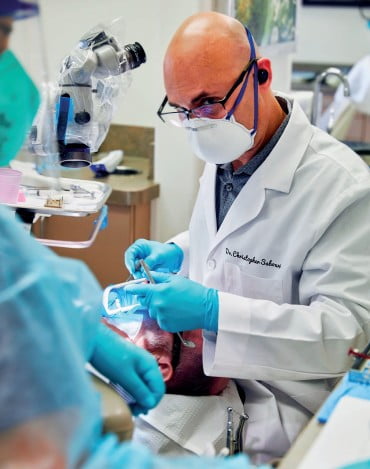
What can you tell us about your background?
I graduated from Fresno State with a degree in psychology. This has proven invaluable in both helping create the most comfortable environment possible as well as guiding our patients through their experience. After this, I earned a Master’s degree in Human Physiology from Loma Linda University. People have always fascinated me. I moved up to San Francisco to study Dentistry at University of California San Francisco (UCSF). I was fortunate to serve as the school vice-president and then president, receiving several awards, including a commendation from the Governor of California as well as the esteemed Pierre Fauchard award for 2004. During my time at UCSF, I founded the undergraduate endodontics certificate program. After completing dental school, I began my specialty training and was accepted into the University of Washington, Seattle, for the Master’s degree in Endodontics. I am a proud father and husband and the oldest of seven siblings. I like to keep moving.
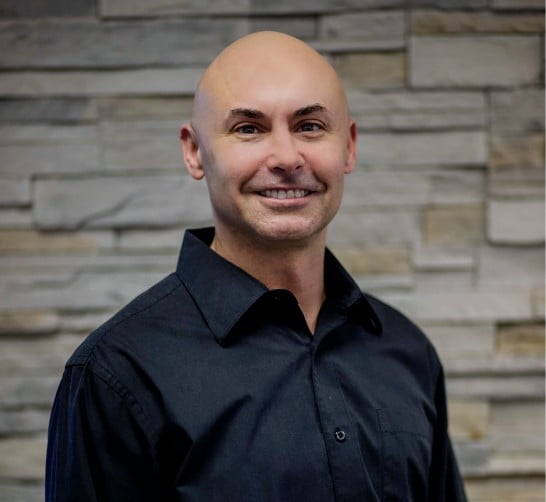
What training have you undertaken?
As an endodontist, I have advanced training in diagnosis as well as root canal treatment, microsurgery, and other related procedures geared to save natural teeth. Additionally, I am certified to offer Pediatric and Adult Oral Conscious Sedation (DOCS). While I no longer offer these services, I have also had training in IV sedation (USC) and surgical implant coursework (Misch Institute), and received a Fellowship from the ICOI. I have patented/patent-pending work and published in the Journal of Endodontics (JOE). Outside of clinical skills, I have done creative work in my passions — leadership, futurism, and business workflow systems.
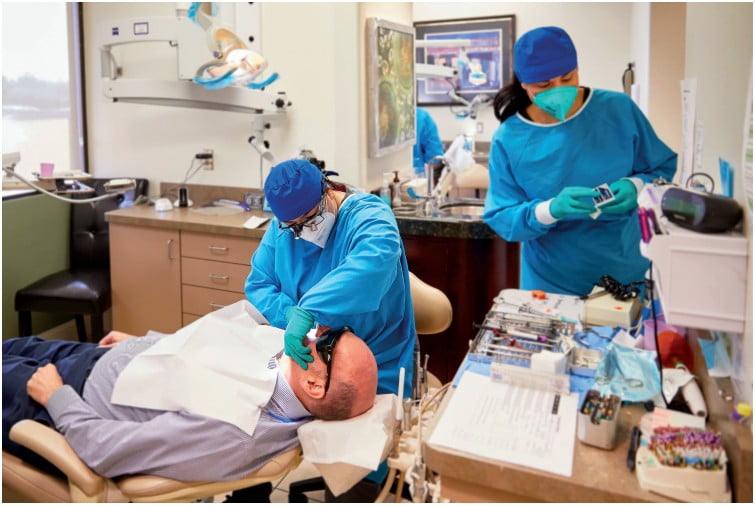
Is your practice limited solely to endodontics, or do you practice other types of dentistry?
Solely. Endodontics is the best!
Do your patients come through referrals?
Yes, all our patients are referred from local general dentists as well as referring offices from surrounding counties, approximately 200 in total.
Professionally, what are you most proud of?
Business insights and step-by-step developments with our root canal specialty office — specifically, the workflow side. Eliminating gaps and overlapping team member responsibilities made our days so much more enjoyable and productive. This is what led to Endodontic SuperSystems. The daily death by a thousand cuts and no clear direction forward can be tiring. When starting out, I wish I had a clearer way to grow. I am most proud of sharing something I wish I had in the past — a team that is kept fresh and engaged with routines so that we might all enjoy flowing as well as more predictable days that grow out of a fully defined, interconnected business processes.

What do you think is unique about your practice?
There might be very little unique to my practice other than we have a “true north,” the resource that we train and retrain quarterly on. It keeps us focused and gives us standards that undergo vetted improvements. Being that organized looks a little like a synchronized flow to patients, and they take serious notice.

What has been your biggest challenge?
Starting a business without industrial management experience, and then testing step-by-step how to run a practice with complete team coordination at the most detailed level possible. What I found was that everything generally came to the dentist owner, resulting in bottlenecks and frustration. But there was not an easy alternative. Often this dynamic results in friction between team members and the endodontist, with each group pointing at the other. It is difficult to operate a practice. There are a large number of practice improvement directions and very little clarity on what is the right way to improve. Also, we are doing root canals during the day, so the team needs maximum clarity on their step-by-step. I have even heard of great practitioners selling their offices out of frustration.

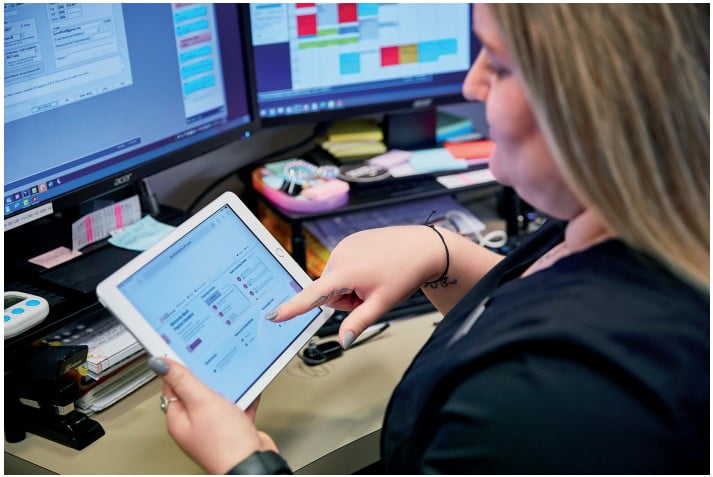
What is the future of endodontics and dentistry?
Fully interconnected smart business. Endodontic business is about to change — big time. And those who choose to work without tools for empowering their team with digital workflows (and new insight into time bottlenecks) will be left behind. I see people looking for marketing or management pieces to solve the pain, but every part of the business impacts the other. What good is increasing marketing if the practice is not prepared to double production? What good is management without the specific insights to keep a team running cohesively? With ESS, the vast majority of the pieces of the business are available for learning (Learn) for rocket-fast on-boarding. The software component shows exactly where time waste occurs (Do), and employees submit ideas for improvement (Improve), as well as insights into team member sentiment level. Learn, do, improve. No gaps, no overlapping work. And time visuals. We are dubbing this new tech branch ExecuTech.
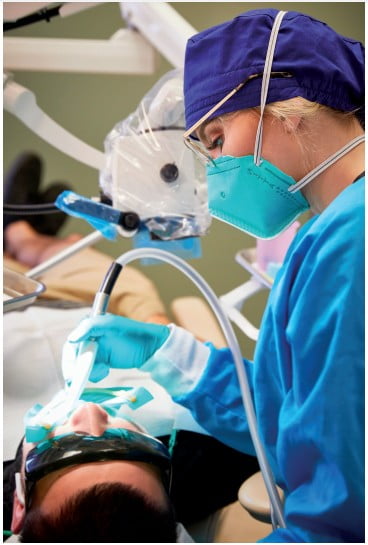
What are your top tips for maintaining a successful specialty practice?
Endodontic SuperSystems (patent pending). Get going with ESS, it’s like buying a subscription to the future of small business. Learn, do, improve. For the life of your business.
What advice would you give to a budding endodontist?
You can have it easier than prior practitioners who used to wish for a “business-in-a-box” to help run their office. Endodontic SuperSystems is the cutting edge for your new team. Imagine saving 5 to 8 years to fully develop your team. Focus on what you love — endodontic care and the best parts of owning your own business. Develop a team that can work by processes and take on the day-to-day weeds that you, as the endodontist, are too valuable to spend time on. ESS is a transgenerational model where you start from day one with the best workflow routines and improve from there. Why reinvent the wheel, when you can start with an amazing wheel and just keep improving it?

What are your hobbies, and what do you do in your spare time?
Spending time with my beautiful family, reading (hundreds of books a year), skydiving, watching gastrophysics stuff, economics, developing business systems, and spelunking. Imagining.
Who has inspired you?
Jim Collins, author of Good to Great and other books about what makes great companies thrive.
What would you have been if you didn’t become a dentist?
Corporate CEO, industrial psychologist, or ER physician.
When did you become a specialist, and why?
I chose dentistry because I feel passionate about providing pain relief while also having a family life and my own business to run. Why endodontics? Growing up I had (correctable) extremely poor vision, so I felt right at home working in areas that are not very visible. The specialty felt magical to me, and I remain eternally grateful for the opportunity to be a member of our amazing profession.
Why did you decide to focus on endodontics?
I spent a lot of time choosing a profession, and endodontics was just the perfect fit at so many levels. I love what we all do. So happy.
How long have you been practicing endodontics, and what systems do you use?
I have been practicing endodontics for more than 17 years.
What is the most satisfying aspect of your practice?
The most satisfying aspect of my practice is the opportunity to help provide opportunities and challenge my team to try new things while also seeing what I can do to make their day-to-day smoother and smoother.
Tell us some of the details about your practice
I have two offices that have four operatories each. (We only practice at one location at a time and need another endodontist now.) We employ six dental assistants, one extended function, four patient coordinators, one manager, one marketing liaison, and one endodontist! Learn more about Dr. Sabourin and ESS by visiting https://endosupersystems.com/.
After reading about Endodontic SuperSystems, check out this article by Jackie Raulerson on how to share your practice and treatment successes with an effective presentation. https://endopracticeus.com/ready-set-present/
Stay Relevant With Endodontic Practice US
Join our email list for CE courses and webinars, articles and more..

